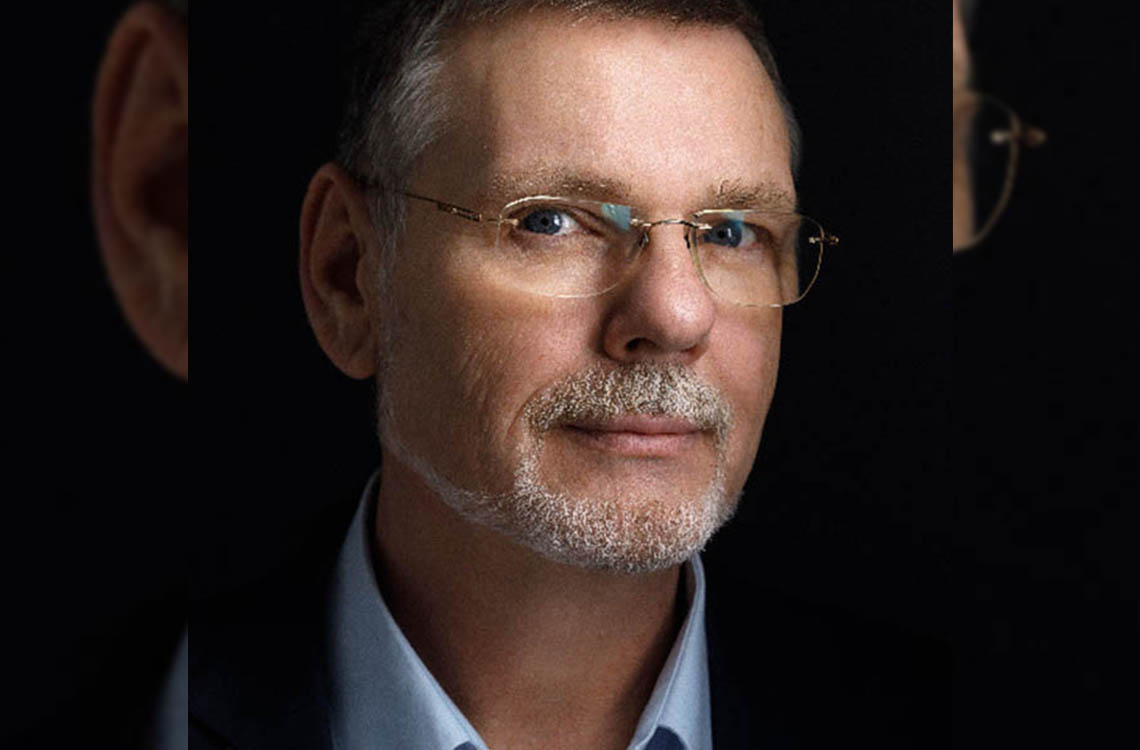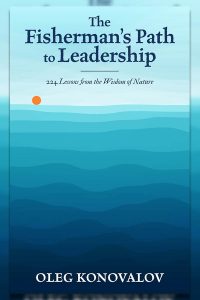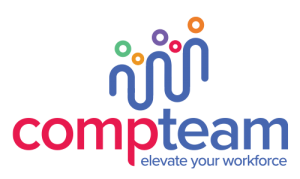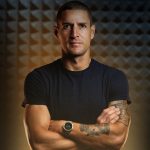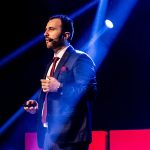Dr. Oleg Konovalov – The Fisherman’s Path To Leadership: Lessons From The Wisdom Of Nature
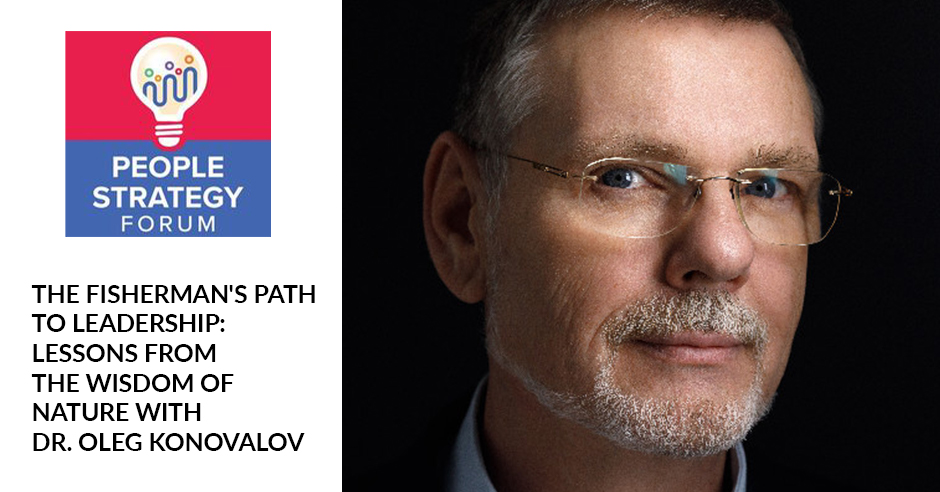
Leadership is an ever-evolving journey, and understanding its true essence requires a fresh perspective. In this episode, we explore the path to leadership with Dr. Oleg Konovalov, often called the da Vinci of visionary leadership. Drawing from his experiences on deep-sea trawlers, Oleg shares insights from The Fishman’s Path to Leadership, revealing how the unpredictability of nature mirrors the challenges leaders face. Join us as we uncover how shifting our perspective—much like a fish views a fly—can redefine how we lead, communicate, and create lasting impact.
—
Listen to the podcast here
Dr. Oleg Konovalov – The Fisherman’s Path To Leadership: Lessons From The Wisdom Of Nature
Welcome to this episode of the People Strategy Forum, where we dive deep into the currents of visionary leadership with Dr. Oleg Konovalov. Oleg has been renowned as a Da Vinci of visionary leadership. He has a wealth of experience guiding organizations through transformative strategic planning and execution. His profound insights into organizational dynamics and leadership have established him as a luminary in the field. We will explore his unique lessons from The Fishman’s Path to Leadership, drawing parallels between the tranquility of nature and how nature can also be quite chaotic and how that applies to leadership.
Oleg’s approach not only reshapes how we view leadership but also offers practical strategies for nurturing a thriving corporate culture. Join us as Oleg shares how the principles of nature can lead to robust leadership practices that are not only sustainable but also convince our leaders to do their best work and our people to do their best work. Get ready for a transformative leadership style and get those great learnings from Oleg Konovalov and how he brings this to the table. Welcome, Oleg.
Thank you. Thank you for inviting me to your great show.
I know that we are going through one of your books, but you are an avid writer, and there are many books that you have that are out in the marketplace. We can talk a little bit more about that, but right now, I would love to dive into getting to know a little bit more about who you are and how your experiences have brought you to help the leaders that you have.
Visionary Leadership & Nature’s Influence
My role is very simple. It is to find grand solutions to grand problems. Therefore, my key area is vision and visionary leadership because I’m not a philosopher or a historian who digs into the past. My aim in my role is to help people create a prosperous future, to be successful, and leave a legacy. Therefore, I’m playing those big phenomena. That’s quite important. You mentioned that this conversation is about nature. What is greater than us? Nature. What could we learn from nature?
I know you are a leadership coach, and you help leaders develop and so forth, but where did it all start? You wrote The Fishman’s Path to Leadership based on your experiences on a trawler. Is that correct?
I spent a bit of time when I was much younger as a deep-sea trawler in the North Atlantic, so I know the taste of salty water. I love salmon, fly fishing, and the Atlantic moment. I have been fishing in Russia, Norway, Scotland, and Iceland. I love chasing large fish. What’s the point of chasing small fish? No fight, no fun, but it’s not about wrestling with a monster. It’s all about growing within.
This is a very interesting journey because I started all those days as a second engineer on deep-sea trawlers, and now I’m one of the top coaches and one of the top experts on vision. It’s always a question, “What can I do better?” The world is changing so fast that you can’t win tomorrow using today’s mindset.
Fishing is a great example. You can’t catch a fish today in the same way as you did last season. You must think all the time about your approach because nature is developing. Therefore, we must think differently all the time. You need to be a part of it. You are not a spectator. You are not a visitor. You must be a part of it, and therefore, we must think differently in the way nature evolves, and you must be better.
One of the stories that you shared is you were talking about the concept of fly fishing and also thinking about the fly that you are using. A lot of times, as you are buying a fly at a fly shop or even tying your own, you are looking down upon the fly, and you’re framing the colors and how big it is and so forth. In your book, you point out that the thing we need to realize is that the fish look at the fly from the bottom up.
This is something we know so little about because we are using our imagination. You see that it’s colorful. You see that it’s a nice feather, and you think, “It’s so juicy. It should be perfectly brilliant.” I learned from these old guys who probably could stick a finger in the water and grab a fish. I learned from them. One of these guys came and looked at my flies. “Brilliant. How much time have you spent tying those flies?” I thought he was praising me. I said, “I put in,” and it took like a few fish out. He made it fairly ugly. Now, he will catch a fish.
Understanding The Customer’s Perspective
The way you must think is the way the fish thinks. In real practice and real business, think how many startups or businesses come up with brilliant ideas and say, “People will love it.” “Did you talk to people?” “No, but they will love it.” It wouldn’t work. It’s never worked because people have their own opinions, but here’s the only difference. I can’t ask a fish to run a survey. “Would you love that fly or that fly?” No chance for a response, but you could talk to people.
How many senior leaders do you know who talk to customers or clients in a way that understands what they need? They are trying to push their solutions forward and meet resistance. It doesn’t work. You can’t create a new market with something that people don’t want to accept. We talk about stimulus, or we must offer something great for people.
You can’t create a new market with something that people don’t want to accept. Share on XA simple example is if I tell my son ice cream, he’ll jump immediately. Even if I would just like “Ice.” It would be, “Yes.” It’s a matter of response. What we usually do in business is offer a stimulus without listening to a response. It’s not about what fly you offer, which you see as a great stimulus. It’s about the response from the fish.
One thing that Howard does a lot is help clients find the right type of system that will work for their situation. Howard, what are some of the complications that you see when you are trying to find the right solution, like where Oleg is trying to find the right fly for the situation?
You have to go in with an open mind and not rush to find the solution that you think is best for them, and dig in and look at what the issues that the client is facing are. What are the problems? What are they hoping to achieve? Spending that upfront time hearing from them, actively listening, and then proposing some solutions that might work best. If you go in saying, “I have the answer right off the bat,” they are not looking for that. They are looking for something that’s going to be customized to them and solve their problems and make their lives easier because that’s what they are facing. That’s what they are dealing with.
Howard, I agree with you. Several years ago, people were fairly well-accepting of something that you could offer them off a shelf. Today, people are looking for something that is more tailored to them. It’s not only about IT solutions or software they want something that would be tailored to their specific needs. We are becoming more sophisticated as clients, and therefore, it’s the same. If you are not offering that sophisticated fly, you won’t get that client on the hook. We are talking about smart businesses, and we know about the smartness of our clients, but we are still not connecting them.
One thing that you mentioned in your book as well, Oleg, is you had shared a story about where you went to a beautiful location, you were fishing on a stream, and then somebody came along and said, “This is great that you are fishing here, but you are not going to catch anything for a few months.” Can you tell us about that?
Timing & Market Readiness
I decided that I was the smartest. It was the very beginning of a season, and the fish were coming into the river. You could catch a fish at the mouth of a river, but still not at the top end of this river but I said, “I will be the smartest. I will go upstream. No one is there yet. I will be casting, and I will get the largest fish. Is anyone troubling me?” A fish inspector was walking around, and he was like, “Do you have a license?” “Yes.” Like, “Don’t worry. I’m not checking on idiots.” “What’s wrong?” I was at the beginning of my experience. He said, “It’ll take about another 3 or 4 weeks before the fish will be here.” Too early. All looks phenomenal. All looks beautiful, but no fish in here yet.
We are about to jump the gun and say, “It’s a new market,” or something like that. In my life, I have created quite a few markets in different industries, and the last market that I have created is regional leadership coaching. It’s never been created before. If you have one client, it’s not on the market yet. You must create a market. Now, I could say yes, there is a market because I have trained people from more than 40 countries, and they are training more leaders in their countries. From the US to Malaysia and from Brazil to Japan, they see the market.

Path To Leadership: If you have one client, it’s not on the market yet. You must create a market.
Therefore, you must be very conscious about whether it is a grant. Is it a market? What are you doing? Are you still casting to exercise your fly fishing techniques? You can imagine the beginning of the season is always cold. It’s not like the sun is shining and you are about to have a sunbath. No. It’s cold, windy, and rough. When I came back to my car, I was fairly exhausted with an empty bark. Disappointed. That was a great lesson.
I love working with Sumit because he understands the local markets in different parts of the world, how the cultures, and so forth. That’s part of the lesson. If we tap into some of those local resources, those experts that are local, that know the streams, that know how business is done there, then we can avoid some of those errors. What would you say about that, Sumit, understanding your local market?
The Importance Of Understanding Local Markets
It helps to have a good blend of somebody local and somebody who’s not local because it’s easier to break the biases and look beyond the obvious when you’ve got somebody who’s not from the same geography or not from the same place. At the same time, it’s also important to quickly understand the culture and how things work, and it helps you get off the ground faster.
One of the examples I was thinking of was a project I did in Mongolia, where people from all over the world were struggling to make heads or tails of the culture and why people weren’t following rules and not sticking to defined processes. Folks from the US and Europe were very frustrated with this working environment.
Being from Asia, rules are meant to be broken I mean, I wouldn’t say that on the record, but that’s how Asians are wired. The idea was to show them what could potentially go wrong and what the consequences are of breaking the rules. That’s when people started getting the real picture. It became easier to influence them, not simply by saying, “This is a rule, it exists, so you should follow it,” but by showing what can go wrong and what has gone wrong in the past got the message across.
I recall a very interesting story from business many years ago when Poland got rid of the communist style and became more of a democracy. When foreign businesses or Western businesses started flowing in, this famous shampoo, Head & Shoulders, was introduced. What they did was immediately put it on TV as an advertisement, and people stopped buying it. In their mentality, which came from the communist era, everything on TV is crap.
What you are saying, Sumit, and I’m echoing it, is that these locals know how to find the shorter way to the local resources. Whether following the rules or breaking the rules doesn’t matter. They are saying, “This is the shortest route.” When you are coming to a new area, a new country, you don’t know how to play the game. They might know a specific word, a specific reference, or an approach from a different angle. Adjust your offer, but you need those people in all cases.
Even when you talk from stages, it’s a normal good practice for every speaker. You start by saying something in the local language, “Good morning,” or whatever. You are trying to connect to their subconscious minds. You are trying to find the shortest way to their hearts. Think about locals. It took generations to accumulate that knowledge. Whether it’s about fishing in a specific river or doing business in this country, and you come in with your rules saying, “It would work my way,” you need to get to the essence.
Your point about the TV advertisement brings to mind another story, which I’m not sure if it’s true or not, but a large soft drink brand that was launching in the Middle East had a print campaign showing a man dying of thirst or low on energy in the desert. The second panel showed the person taking a sip of the soft drink. In the third panel, he was running around.
When they launched it, their sales completely dropped, and they got destroyed. Somebody pointed out that they were looking at it from left to right, but in the Middle East, people read from right to left. Their messaging ended up showing that the person was fine, drank the product, and then was close to dying. I don’t know if it’s true or not, probably not.
The logic is there because the approach is different. There’s nothing wrong. It’s just a matter of how things work locally. For instance, I do a lot of work in different countries and how to get under their skin.
The other thing is a lot of times when I’m working with a client, and we are talking about pay because I’m a compensation consultant in my day job. What happens is that they say, “We want to do exactly what Google is doing or what Amazon is doing or what this brand or that brand is doing,” but they don’t realize that might not be the best situation in their situation. The thing that you are telling in your book is reading a story that resonated with me about when you started fly fishing, you got all your brand-new gear, and then a local came in and showed you up a bit. Can you tell us about that story?
I’ve had quite a few similar lessons. First of all, it’s not about what I have in my hands. It’s about how I could think like a fish. In large corporations, they are in a position where they are forced to put everything into a uniform algorithm. For them, more than one million people work for Amazon. It’s huge. Therefore, they must think like a little country in terms of how to satisfy every citizen.
If you work in a company with a thousand people, you can find a tailored solution that works better for your people. Every bureaucratic system that works well for Amazon or Google is fairly complicated. Simplicity is very important in this sense. If you can make things as simple as possible in your organization or business, you’ll be more effective.
The simpler you make things in your organization or business, the more effective you'll be. Share on XWhat’s the point of bringing a bureaucratic, complicated system into a small or medium-sized business? It would ruin the company. It would make people fail because they are not treated as they are. It’s not about how expensive your tackle is. It’s about how masterfully you can use it. If something is complicated, like a model from a large company, you need years to be masterful at it. You don’t have those years. You have days. Therefore, you can’t manage it.
The best approach is knowing what will work in your particular situation and not being swayed by the bells and whistles, the elaborate pieces that add to the administration and expense.
Adapting Business Strategies To Fit The Context
There is no chance to bring a deep-sea trawler into a shallow river to catch one fish. Therefore, you must see what works in this specific situation. If someone is good at using a system that is appropriate for Microsoft or for whatever large company, every system is about serving people. It’s not about making them cook.
The other piece, this hat part of being a responsible fisherman too, as we are thinking about. I know that my son loves to fish, and he does catch and release. He loves to catch them, see their beauty, then throw them back in the stream and take a picture.
This famous Scottish comedian, Billy Connolly, in the old days, had a joke. He said, “I went with my father trout fishing, and we were catching and releasing.” He was a young boy. He asked his father, “Why are we releasing fish? What’s wrong?” Looking at it, letting it go. His father responded, “I love fish panicking.”
There’s a lesson there when we think about responsibility in our environment. There are certain areas where fishermen love to go because there are a lot of large fish, but if we overfish that area, then we are not going to be able to enjoy it, or others may not be able to enjoy it. There are some lessons for leaders to be concerned about when we look at responsibility in the environment. I used to fish in Alaska, and it was important to ensure that fish and game officials checked how many fish were coming into the rivers to make sure we didn’t overfish. That leadership should have the same type of perspective. What are your thoughts?
Sustainable Leadership & Avoiding Burnout
First of all, people pollute nature. Nature doesn’t pollute people. Nature doesn’t ruin people. We ruin nature. Therefore, if we are trying to get more out of people than we need, we are ruining them. As a leader, I’m always trying to push people to do something beyond their limits, what will I get? I will get exhausted by people who can’t produce much because they are exhausted. They are overfished.
There is no harmony, no balance. More or less, it’s pure exploitation. We’ll kill people, we’ll kill the river, it’s the same analogy. How much do we need? It’s a fairly important question because when we are fishing, catch and release is a great approach. Thanks to someone who created this, invented it, or came up with this idea. Otherwise, it’s very difficult to say “Enough” because we are taking but not putting anything back. As a leader, if I’m draining people’s energy for nothing, how do I restore that energy within them? Tomorrow, they are exhausted and won’t be productive or creative.

Path To Leadership: As a leader, if you drain people’s energy for no reason, how do you restore it? If they’re exhausted tomorrow, they won’t be productive or creative.
That perseverance or thinking about the right balance for your people is important, but there are times when you have rough seas. As you mentioned in your book, you talked about periods when you had to deal with seasickness, work through a storm, and put in extra effort even when you didn’t want to work. There are some lessons there that leaders can learn from.
The Power Of True Teamwork In Leadership
This is the wisdom of teamwork because you are not working just because it’s your job description or duty. It’s my role to do whatever is needed, not just to do my best, but to guarantee that we will come back through that horrible storm in one piece, back into a harbor. Therefore, when you are on a trawler, it is an exceptional example of true teamwork. I am responsible for everyone, and they feel the same way. It’s not about, “We are a team. We are having fun together.” We are codependent. Therefore, we are facing a rough storm together. We are facing a good catch or a bad catch together.
When we are in our offices, we are getting paid salaries. We hardly justify how much value we have brought to the table. When you are working on the trawlers, you are getting shares. Therefore, you know that the quality of your work will impact the overall outcome of the sales of that catch, that fish that we’ll sell. Therefore, I will do my best so my share reflects how I have been working. This is fairly important. Whether you like someone or not, you still must work together very tightly.
There are situations when a person who is supposed to be working suddenly becomes a passenger. What should leaders do in this situation?
Eliminating “Passengers” To Strengthen Organizations
I run training sessions for companies on vision and visionary leadership, and a big part of it is about establishing a visionary corporate culture that is productive and allows people to grow. The first thing is to ask how many passengers you think you have on board. Be very realistic. Usually, my audience consists of senior executives, and they say, “No.” I say, “Can you put on a piece of paper exactly how many people in your department or your branch are not very productive? Those passengers?”
Passengers come in, and they want to be entertained. They come with the largest spoon, they come to lunch first, and they leave last. More or less, they want to be submitted. I love that comment. This is a real case when someone said, “I love them all, but about 40%, if I’m realistic, are passengers.” Someone is coming, and 15% of her staff are passengers. When you are at sea, you don’t have a food supply for these people. You don’t have enough spare bunks in the cabins for these passengers. You need all of us to be productive.
I asked this gentleman, “If you get rid of those 40 people, would you employ more?” Instead of those passengers, he said, “No, those remaining 60% will do the same work with the same outcome, but they will be much more productive because those 40% are troubling those guys. They are interfering with their work, undermining their loyalty and performance. They are not involved.” More or less, you are getting rid of the dead weight.
Making sure that everybody is making their contribution to the organization.
They are like parasites. They eat. They bring nothing, and they are not helping with digestion.
Breaking Through Uncertainty And The Glass Ceiling
Looking into this new year, the world has been very unstable and volatile over the past few years. What do you think is on top of leaders’ minds right now as they enter this new year?
I would think there are three common issues for the majority of leaders, regardless of the country where they conduct their businesses. People have a big lack of clarity. They don’t understand what to do or what’s coming. Therefore, there’s too much noise because they are focusing on short-term goals instead of a great vision, creating something for the future. More or less, I have said many times that we are living in a time of the highest pace of change that humanity has ever faced before. Therefore, that chaos blinds people. People don’t see what to do, therefore no clarity. They need that clarity.
Another very important aspect is that many companies or leaders have a strong sense of hitting a glass ceiling. They are trying to do their best to improve performance and get into new markets, but they are still in the same position again and again. More or less like a hamster in a wheel, repeating the same old mistakes. The performance level is fairly high, but the outcome is not there.
Therefore, it’s all about what we can do beyond our traditional or convenient thinking. It’s all about a very important aspect. I believe that the majority of large companies, and we have done a bit of research with my colleagues on this, would go boost very shortly because of an old mindset. It’s not about the fact that we are in 2025 but that you can’t catch different fish. We are talking about smart Atlantic salmon with the same mindset. You must find an approach or think differently for every fish that you are casting for. The same goes for going into 2025 with a lot of hope.
I haven’t yet heard that we came into 2025 with a new mindset. Therefore, we would be repeating the same things that we did in 2024, in 2023, and so forth. A mindset that is about the future must break through the glass ceiling and gain clarity. If you are not clear, if you are trying to hit the same level, and if you are not thinking ahead, you’ll be where you are now for a long while.
The Future Of Leadership: Visionary Thinking For 2025 And Beyond
As we come to the top of our time here, what are the big things that you are working on that you are trying to move forward in your business?
I’m still expanding my business, and the demand for visionary thinking is getting greater because people need solutions for tomorrow. I had a conversation with one of my friends, who is a well-known philosopher, and I asked him, “Why are philosophers paid less than leadership experts?” They do a lot of brain work. He said, “It’s because you are coming up with solutions for today. I’m coming up with solutions for tomorrow. Who will pay for yesterday?” It’s gone.
Therefore, vision, leadership, and visionary thinking are becoming more and more in demand. Leadership is not a mass product. It’s always about being involved with every team member. It’s like you can’t be a father to your family without talking to or being involved with every family member. This is the same. Leaders must find time for everyone. Therefore, I believe that 2025 will be quite a demanding year for me in terms of business.
Leadership is not a mass-produced product; it’s about engaging with every team member. Leaders must make time for everyone. Share on XAs we conclude here, what would you like leaders to remember from this conversation?
One of the great challenges for many leaders is the ability to draw lessons from their previous experiences. If you can’t gain lessons, you are building your future in the same scenario. It’s like building a castle on quicksand. The beginning of the year is a great moment when you could say, “What have I learned from last year?” Write a few bullet points, “I have learned this and this.” That allows you to jump further.
Thank you so much for joining us on the show. It was a great conversation. I enjoyed it. Thank you so much.
Thank you. Sam, Sumit, and Howard, thank you very much.
To all those tuning in, we’ll see you in the next episode.
Important Links
About Dr. Oleg Konovalov
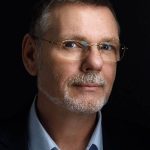 Dr. Oleg Konovalov, often referred to as the “da Vinci of Visionary Leadership,” is a globally recognized thought leader, author, business educator, and C-suite coach. With over 25 years of experience in business leadership and consulting for Fortune 500 companies worldwide, he specializes in helping organizations craft and execute visionary strategies, diagnose and resolve organizational challenges, and build strong corporate cultures that drive superior performance.
Dr. Oleg Konovalov, often referred to as the “da Vinci of Visionary Leadership,” is a globally recognized thought leader, author, business educator, and C-suite coach. With over 25 years of experience in business leadership and consulting for Fortune 500 companies worldwide, he specializes in helping organizations craft and execute visionary strategies, diagnose and resolve organizational challenges, and build strong corporate cultures that drive superior performance.
As an accomplished author, Dr. Konovalov has written several influential books, including The Fisherman’s Path to Leadership, The Vision Code, LEADEROLOGY, Corporate Superpower, Organisational Anatomy, and Hidden Russia. His work provides practical frameworks for leadership, culture development, and strategic vision execution, helping leaders unlock their full potential.
Dr. Konovalov’s expertise has earned him global recognition. He has been featured on the Thinkers50 Radar, was shortlisted for the Thinkers50 Leadership Award (2021), and is ranked among the Global Gurus Top 30 in Leadership. He has also been honored as the #1 Global Leading Coach by Marshall Goldsmith Thinkers50.
Holding a doctoral degree from Durham University Business School and an MBA from the Open University Business School, Dr. Konovalov is also a visiting lecturer at several business schools and a sought-after speaker at major global conferences.

